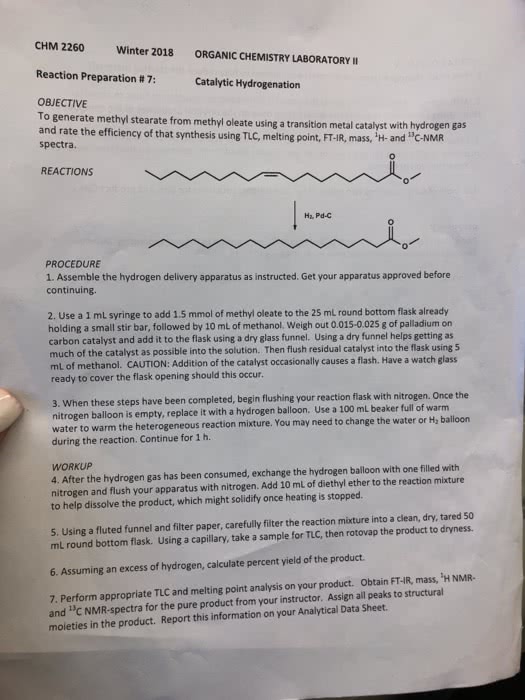CHEM 0310 Lecture Notes - Lecture 12: Electrophilic Addition, Syn And Anti Addition, Steric Effects
77 views2 pages
Document Summary
The carbon-carbon pi bond is relatively weak, and the chemistry of alkenes is governed largely by its reactions. The most common transformation is addition of a reagent a-b to give a saturated compound in this process, the a-b bond is broken and a and b form single bonds to carbon. Additions to alkenes should proceed to products with release of energy (negative delat h) The simplest reaction of the double bond is its saturation with hydrogen. The process requires a catalyst, which may be either heterogeneous or homogeneous either insoluble or soluble. The catalysts frequently are insoluble materials such as palladium, platinum, and nickel. The major function of the catalyst is the activation of hydrogen to generate metal-bound hydrogen on the catalyst surface. An important feature of addition reactions to alkenes is their potential stereochemistry addition from one side of the double bond is called syn addition while from opposite sides it is called anti.
Get access
Grade+
$40 USD/m
Billed monthly

Homework Help
Study Guides
Textbook Solutions
Class Notes
Textbook Notes
Booster Class
10 Verified Answers
Class+
$30 USD/m
Billed monthly

Homework Help
Study Guides
Textbook Solutions
Class Notes
Textbook Notes
Booster Class
7 Verified Answers
Related textbook solutions
Chemistry: Structure and Properties
2 Edition,
Tro
ISBN: 9780134293936
Basic Chemistry
5 Edition,
Timberlake
ISBN: 9780134138046
Principles of Chemistry Molecular Approach
4th Edition,
Tro
ISBN: 9780134112831
Chemistry: Structure and Properties
2nd Edition,
Tro
ISBN: 9780134293936
Principles of Chemistry Molecular Approach
3rd Edition, 2014
Tro
ISBN: 9780321971944
Chemistry: A Molecular Approach
3rd Edition,
Tro
ISBN: 9780321809247
Chemistry: A Molecular Approach
5th Edition,
Tro
ISBN: 9780134874371
Principles of Chemistry: A Molecular Approach
4th Edition,
Tro
ISBN: 9780134895741
Chemistry: The Central Science
14th Edition, 2017
Brown
ISBN: 9780134414232
